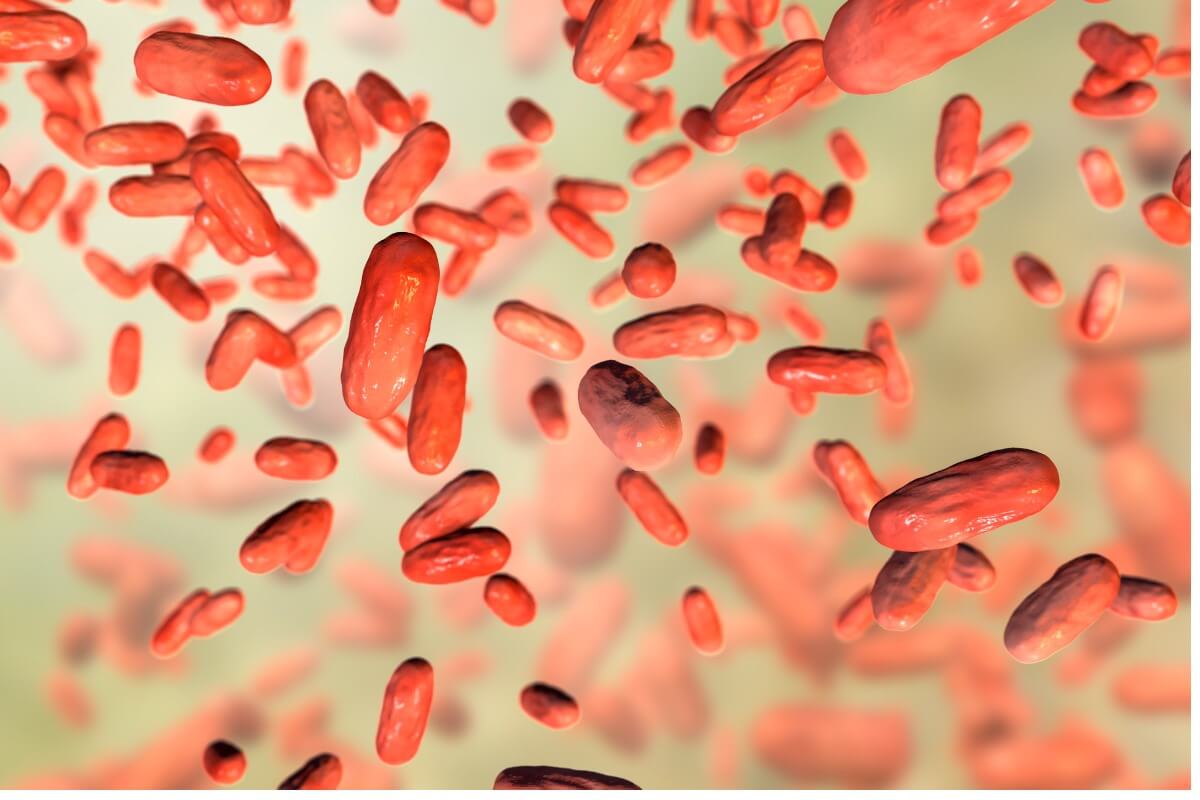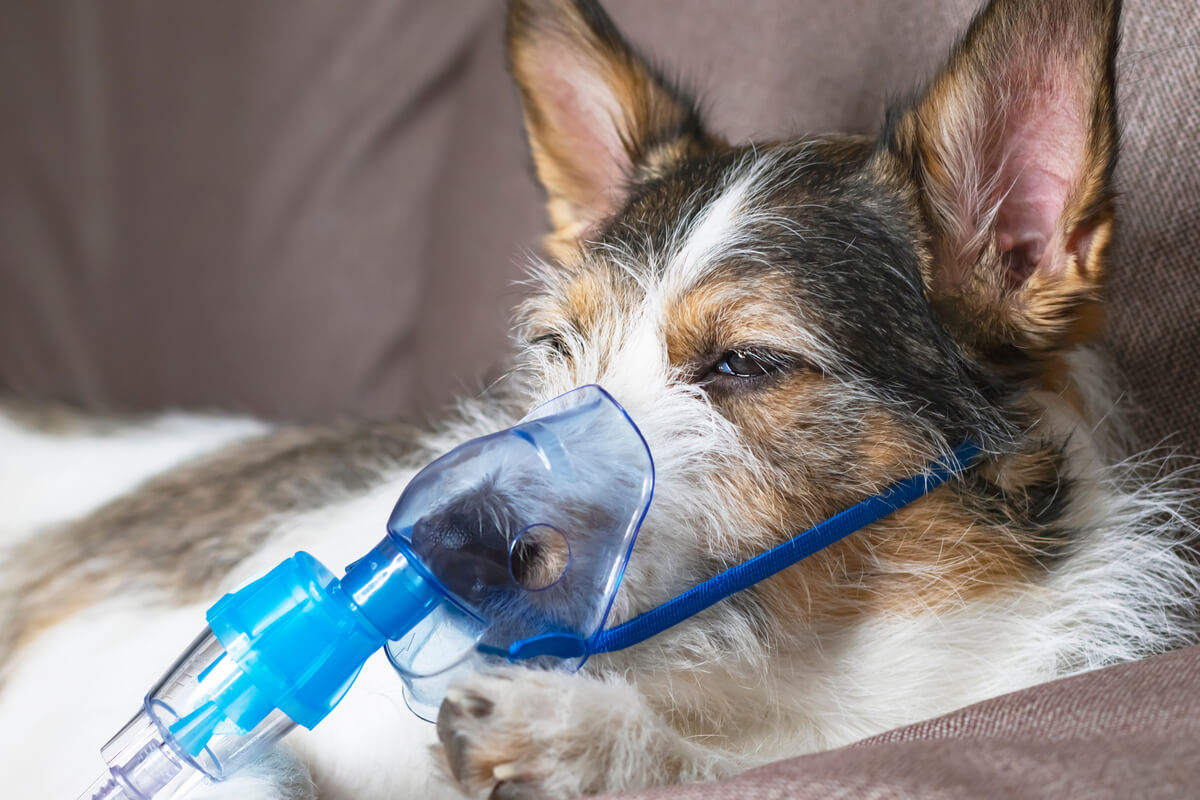Bordetella in Dogs: Symptoms and Treatment


Written and verified by the vet Daniel Aguilar
Dogs are susceptible to several diseases caused by pathogens such as viruses, bacteria and fungi. The main part of the body responsible for protecting their bodies against these threats is the immune system. When this is affected, bacteria such as Bordetella in dogs can enter, which causes an imbalance in their health.
In the world of dogs, this disease is considered of great medical importance. To treat it correctly, it’s necessary to carry adequate preventive management and, if necessary, pharmacological treatment.
You need to be careful, because a simple cough could end up with very serious repercussions. Below, we’ll share with you the best tools to combat the condition.
What is Bordetella?
Also known as infectious tracheobronchitis and commonly called kennel cough, this disease is caused by a bacterium with a great affinity for respiratory tissue. Its name is Bordetella bronchiseptica, a highly pathogenic microorganism.
Despite how easily and rapidly dogs can infect each other with this disease, this condition has a good prognosis, as long as effective treatment is carried out. Together with canine adenovirus type 2 and canine parainfluenza, it’s one of those responsible for the development of the aforementioned disease. Any of the 3 microorganisms can act as a primary or secondary agent of kennel cough.

Causes of contagion
The name kennel cough describes one of the main causes of contagion between animals: overcrowding. It’s a bacterium that’s transmitted by direct contact through inhalation, reaching the upper respiratory tract without major problems. Fomites (inanimate objects) and some other animal hosts provide the indirect route of transmission.
Although Bordetella in dogs has the ability to affect canines of any age, the most significant complications have been observed in puppies, immunosuppressed dogs and dogs with incomplete vaccination schedules. The pathogenic particles have the ability to survive in water, soil and under nutrient-poor conditions, hence the high rate of transmission.
Symptoms of disease
Due to the areas of the dog that the microorganisms that cause Bordetella in dogs congregate in, the symptoms can be very varied and can be confused with other respiratory diseases. However, the most common sign in all patients is a dry, hoarse cough, caused by an inflammation of the vocal cords.
The other secondary signs depend on the patient’s condition, severity, and progression of the disease. Within this symptomatology, you’ll be able to observe the following:
- Fever
- Vomiting
- Decreased appetite
- Weight loss
- General weakness
- A persistent cough
- Expulsion of respiratory secretions
It’s crucial to maintain close communication with the veterinarian, and the owner should share anything they’ve observed in their pet, along with any behavioral changes detected. Early diagnosis will be key to the resolution of the problem.
Treatment of Bordetella
The first step in initiating treatment for Bordetella in dogs is isolation of the patient. This will help reduce the risk of spreading to other dogs. Once your pet has undergone a general physical examination, the veterinarian will decide on the ideal drug treatment for your pet.
The administration of treatment will be based on the condition of the dog. Normally, anti-inflammatory drugs are used to heal the inflammation of the respiratory tract. In addition, antibacterial drugs are very effective in controlling the disease, as long as the causative organism is Bordetella bronchiseptica.
The duration of treatment can be up to 10 days. Once the symptoms have disappeared, it’s recommended to prolong the pharmacological administration for 5 more days, all in order to ensure the eradication of the pathogens. In most cases, the antibiotics of choice for professionals are the following:
- Tetracycline at a rate of 15-20 mg/kg orally every 8 hours.
- Doxycycline, a dose of 5 mg/kg orally every 12 hours.
- Chloramphenicol, 50 mg/kg every 8 hours.
- Amoxicillin with clavulanic acid at 10-20 mg/kg orally every 12 hours.
- Enrofloxacin, 2.5 mg/kg body weight orally every 12 hours.
Preventive measures
In order to reduce the risks of the Bordetella infection in dogs, there are numerous strategies you can employ to achieve this. As it’s a condition that proliferates in conditions of low hygiene and overcrowding, it’s essential to perform periodic disinfection of the places where dogs live, especially boarding houses and shelters.
When cleaning we recommend using sodium hypochlorite, chlorhexidine, benzalkonium chloride or bleach. All these products perform an excellent elimination of various pathogenic microorganisms.
If your pet lives with many other animals in confined spaces, try to ensure good ventilation. If any of the animals show signs of Bordetella, it’ll be necessary to isolate them in quarantine for a minimum of 10 days and keep them under observation.
Currently, vaccination is another popular preventive strategy against Bordetella. Both parenteral and intranasal applications will provide the patient with immunity and its duration will depend on the type of substance inoculated.

Now that you know a little more about this disease, we invite you to share it with others. It’s in your hands to protect your dog and be aware of the possible symptoms. Act responsibly and visit your vet for regular checkups for your pet. Your furry best friend and the other members of the pack will thank you!
All cited sources were thoroughly reviewed by our team to ensure their quality, reliability, currency, and validity. The bibliography of this article was considered reliable and of academic or scientific accuracy.
- Mendoza C. Bordetella bronchiseptica en caninos. Coahuila, México. Publicado een enero de 2008. Consultado el 11 de diciembre de 2021. Disponible en: http://repositorio.uaaan.mx:8080/xmlui/bitstream/handle/123456789/2814/1275_CLAUDIA%20NATALIE%20MENDOZA%20MORA.pdf?sequence=1&isAllowed=y
- Mauro L. Manejo de la traqueobronquitis infecciosa canina (TIC) “Tos de las Perreras” España. Publicado en febrero de 2006. Consultado el 11 de diciembre de 2021. Vol. VII. P. 1-9. Disponible en: https://www.redalyc.org/pdf/636/63612643015.pdf
- Bordetella/Tos de las perreras. Publicado el 15 de noviembre de 2021. Consultado el 11 de diciembre de 2021. Disponible en: https://www.animalhome.com.mx/bordetella-tos-de-las-perreras/#:~:text=Se%20le%20llama%20tos%20de,de%20sus%20defensas%20(inmunosupres%C3%AD%C3%B3n).
- Arana M. Bordetella en perros- Síntomas y tratamiento. España. Publicado el 23 de abril de 2018. Consultado el 11 de diciembre de 2021. Disponible en: https://www.expertoanimal.com/bordetella-en-perros-sintomas-y-tratamiento-21867.html
This text is provided for informational purposes only and does not replace consultation with a professional. If in doubt, consult your specialist.